History originally published in AutoWeek November 26, 1983
The Schlumpfs: Hans and Fritz, brothers, textile industrialists of Alsace, fanciers of classic automobiles,, fanatics for Bugatti’s. How the Schlumpfs must have burned to have this car.
They had one chance in World War II during the German occupation of France. The car – a Bugatti Type 49 with a special coupe body designed by Jean Bugatti for the 1932 Berlin Auto Show – was owned by one Mme. Kitty St. Clair Abry. She had owned it since new. And Mme. Abry, a French citizen, had the car in France, somewhere in France. If the Schlumpfs could have found the car its – shall we say – acquisition could have been arranged. The Schlumpfs had friends in high places.
First they would have had to find it, however. Mme. Abry had the car and kept it hidden. Whether secreted in one secure location, or moved from place to place in some Sound of Music nuns-and-Nazi’s escapade, the record doesn’t show. But upon the liberation of France, the Type 49 was still Kitty’s, and not the Schlumpfs’.
Not that Fritz and Hans gave up. As late as 1961 they wrote, asking to purchase the coupe. Mme. Abry, not surprisingly, refused. Though the Schlumpfs, before their empire collapsed in the late 70s, managed to swell their private collection to over 800 cars – of which some 200 were Bugattis – this was one prize which would elude them forever. When Kitty Abry did sell the Bugatti, it was in 1973, to a British collector.
Now turn the calendar forward to 1983. Bill Serri – how to say it – trades in classic automobiles. For a living. No lot, no showroom, nothing so gauche. He doesn’t so much as sell cars as arranges marriages between man and machine, a sort of automotive yenta. Serri, who lives in Merchantville, New Jersey, had arranged a marriage – he has matched a buyer and Kitty Abry’s Type 49.
Serri had said the Bugatti would not disappoint, and he wasn’t wrong. The classic Bugatti radiator is instantly recognizable, a narrow horseshoe with the red medallion at the peak. The royal blue hood, trimmed in silver, stretches crisply to the cowl and the short vertical windshield. In front of the radiator, a finely tapered rod arches from fender to fender, carrying large yellow-bulb Scintilla headlights and topped by an “EB” medallion, the mark of a Jean Bugatti design.
In profile, the car takes on a rakish aspect. The major theme is horizontal, with no vertical line running completely from top to bottom. The look of the car is devil-may-care.
As they should on a sporting tourer, the wheels dominate, with polished metal discs over wires and a spare on either fender. The fenders stop short of the frumpiness of running boards. It’s a car for the young. Fittingly so, for Jean was only about 22 when he designed it.
But that, says Serri as he lifts the hood, is only the beginning. He’s right again. The Type 49 was the last of the single overhead cam straight-eight Bugattis and represented the culmination of the form. The block is all right-angled and hand-etched and bolted to the crankcase with platoon of bolts. But most eye-catching is the squadron of spark plugs nestled under the log-type intake manifold. There are 16 of them, each square to the block and with its own lead running down into a metal tube, and from there back and up to an incredible 16 terminal distributor crowned with a massive squid of wires.
The engine is beautiful with more craftsmanship on the outside the most engines have internally. But what a headache it must have been to service. The non-detachable head meant breaking down the engine just to do the valves, and you can imagine replacing the spark plug wires, re-stuffing that metal “loom”? Serri notes that intact twin-plug engines are rare; that when the distributor cap goes, one plug per cylinder is capped off and an eight lead distributor cap fitted. Kitty Abry, by the way, had her Type 49 serviced by Bugatti agent in Nice and later at the factory in Molsheim. She kept all the paperwork, from which Serri noted that the most common repair was to the Autoflux fuel pump.
For the record, the normally aspirated eight displaces 3.3 liters and is fed by a single American-made Schebler updraft carburetor. There are two intake valves and a single exhaust, an uncommon layout for any other maker, but a favorite for Bugatti. The fan, a new feature with this model, is driven off the camshaft, which is itself driven by a shaft up the middle of the engine. The engine also has full-pressure lubrication, Bugatti’s spray jet system having reluctantly been abandoned during the run of the Type 44, the 49’s predecessor.
Before closing the hood, Serri points out what appeared to be blemishes on the cam box area of the engine. Not the flaking of plating, he says, for of course the engine isn’t plated. Rather, it was flaws in the casting filled with lead for the show, invisible then, but the metals weathered differently.
Then onto the interior. The steering wheel is on the right (the better to see the edge of the pavement on Alpine pass roads), so I settle in back, sit crosswise to provide the occasional extra passenger adequate legroom. The right crowd and no crowding, after all.
The wood! The wood is sumptuous and brilliant; the interior is a cabinetmakers delight. Especially so is the steering wheel. It’s all wood, spokes and all, mortised and tenoned in the best woodworking tradition.
As Seri drove, warming the car, I made several observations. One, the ride is much better than any solid-axle car has a right to have, especially one with friction shock absorbers, even if they are adjustable from the dash. (Ettore Bugatti was stubborn about these things – if it works, don’t change it, make it better. It was almost an ideology of engineering.
Two, the engine is not tick-of-your-Rolex quiet and the transmission is actually noisy on the lower gears, especially so when cold. (The luxury of this Bugatti, a sports tourer, is something different than that envisioned by Messrs. Rolls and Royce).
And third, the seats are low, mere inches off the floor. (Something had to give for that low and rakish look.)
Then Serri pulls over. It’s my turn.
What’s it like to drive this Bugatti? First the rush of simply driving the car, a rare treat among treats, and then there is the fear of doing something foolish and/or expensive, made all the more easy by the center-mounted throttle pedal. Only after dealing with these responses can I get down to getting the feel of this automobile.
It’s an odd combination, really. The transmission, for example, is noisy and non-synchro, but slides right into the next gear as long as one is not timid about it. The steering is jewel precise, like driving a Swiss watch, but in cranking the big wheel around, my hands crashed into my thigh. The brakes are very effective, but only with a lot of pressure on the pedal. Actuation is mechanical, by cables and pulleys, another Ettore’s fetishes.
But that’s Bugatti for you: the finest materials, the finest craftsmanship, making absolute technology work better than the newest contemporary science.
And Jean’s coupe? It’s for putting on the Ritz and the Ritz was meant to be put on, the son’s artistry on the father’s craftmanship. They say that money can’t buy happiness. Sometimes it can’t even buy Bugatti’s, even if your name is Schlumpf.






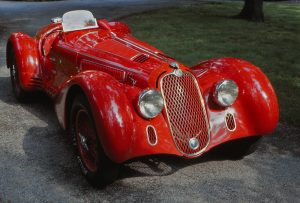
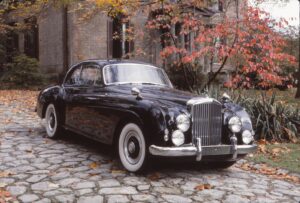
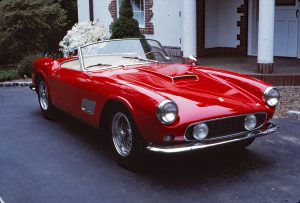
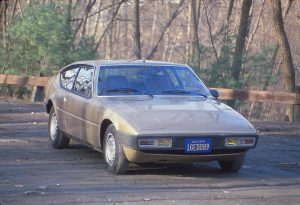
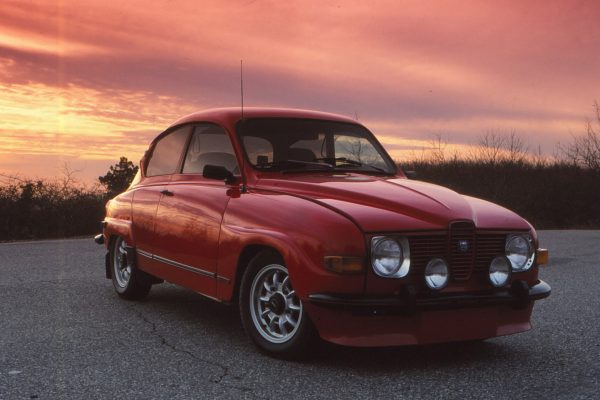
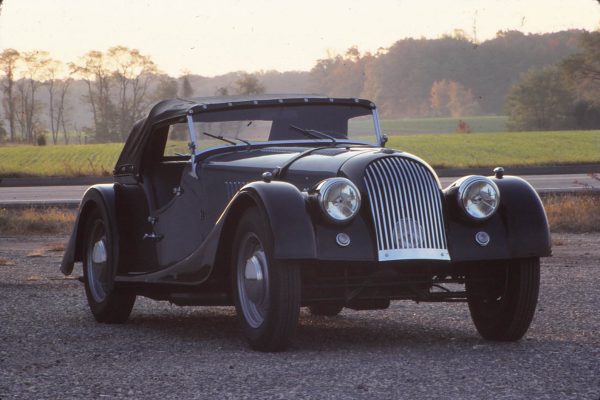
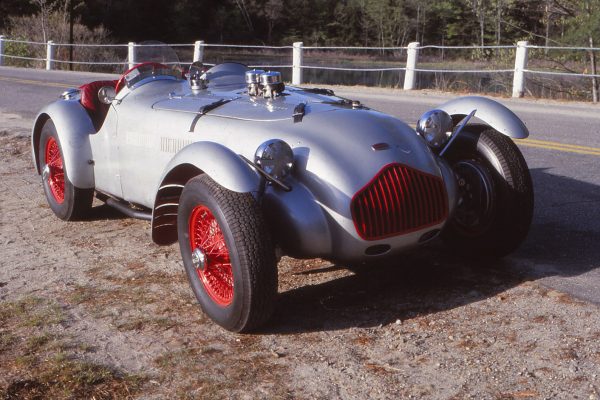
Perfection is attainable when true genius is allowed to reign…
I recall reading that in the pits when Bugatti racing cars were serviced there were no cloth rags for wiping excess oil or grime but rather brushes and solvent. The care and execution of the simplest maintenance was as precise as the machining of the parts.
A Bugatti clutch simply would not function if assembled the least bit out of kilter.
Reading that the gears are noisy and require a determined approach to shift is pleasing showing the mechanical aspect of design to function. Cheers and good health to all and thank you for the report.